EDLP
Every Day Low Prices
What Is Everyday Low Price (EDLP)?
Everyday low pricing (EDLP) is a strategy utilized by companies in which low-priced products are sold on a consistent basis as opposed to exclusively during sales events. Companies implement this strategy by pricing products lower than their competitors.

A fundamental aspect of everyday low pricing is that the low prices must then be maintained indefinitely and not temporarily.
This strategy allows companies to build up consumer confidence and loyalty. Customers learn to associate a company’s brand with quality products that are sold for low prices. Once consumer confidence is established, customers begin shopping with the company at a higher frequency.
One of the most important aspects when implementing everyday low pricing as a strategy is to make sure that customers feel your product quality has not been sacrificed. If customers perceive a lower price to mean a lower quality product then it may lead to a decline in revenue.
A company must convince consumers that its product is of both high quality and low price. If this can be achieved then customers will perceive the product to be of an overall great value.

This strategy deviates from the most common pricing strategies which involve discounts and sales events. Most often we find companies that maintain prices at a normal level, then during a holiday a sale is initiated to increase customer purchases.
Discounts or sales may as well occur when a specific product is struggling to sell. Firms that have famously implemented the everyday low pricing strategy include:
Some of these companies have had success with the everyday low pricing strategy, and others have failed and abandoned the strategy. Everyday low pricing is most often associated with Walmart.
The company implemented this pricing strategy in the very beginning and has stuck with it all the way up to the present day. If you walk through any Walmart store you will find signs on display all around the store that say “Everyday low pricing”.
Key Takeaways
- Everyday low pricing (EDLP) is a strategy where companies consistently offer low-priced products instead of relying on sales events.
- EDLP builds customer loyalty and confidence by associating a brand with quality products at low prices.
- Maintaining product quality is essential to prevent customers from perceiving lower prices as lower quality.
- EDLP simplifies decision-making for customers and reduces marketing expenses.
- EDLP stabilizes revenue streams and allows for more efficient planning and forecasting, but it may take time to establish and can alienate customers who enjoy searching for discounts.
How does EDLP work?
Companies implement different pricing strategies in order to attract specific customers. Some customers are more attracted to discounts and sales while other customers may be more attracted to consistently low prices.

Switching between pricing strategies can be a difficult process. However, it can be beneficial, if implemented successfully.
Companies usually choose to initiate everyday low pricing when they are looking to increase profitability. The idea is that despite there being lower prices for each individual product, customers will buy more products at a higher frequency and do so more consistently.
This dynamic leads to an increase in overall revenue and absolute net income.
From the consumer perspective:
- Everyday low pricing makes it easy to search for products. Customers can rely on past experience and trust in the company’s brand.
- There is no need to research online or call around to various stores.
- The customer feels confident that the lowest price and best deal can be found at the company using EDLP as its pricing strategy.
From the company’s perspective:
- It helps to lower advertising and marketing expenses. Because the company always has the lowest price available, there are no sales or discounts so there is no need to advertise come Black Friday.
- The company is able to stabilize its revenue stream. Companies that do not utilize EDLP may have massive spikes in their revenue around holidays or when advertising for a sales event. Meanwhile, a company using EDLP reduces this volatility in income.
- The company may as well be able to lower employee expenses. During sales and holidays, many companies need to hire seasonal workers to assist with the uptick in business. However, since companies using EDLP don't host sales events, there are no seasonal workers and therefore lower payroll costs on an annual basis.
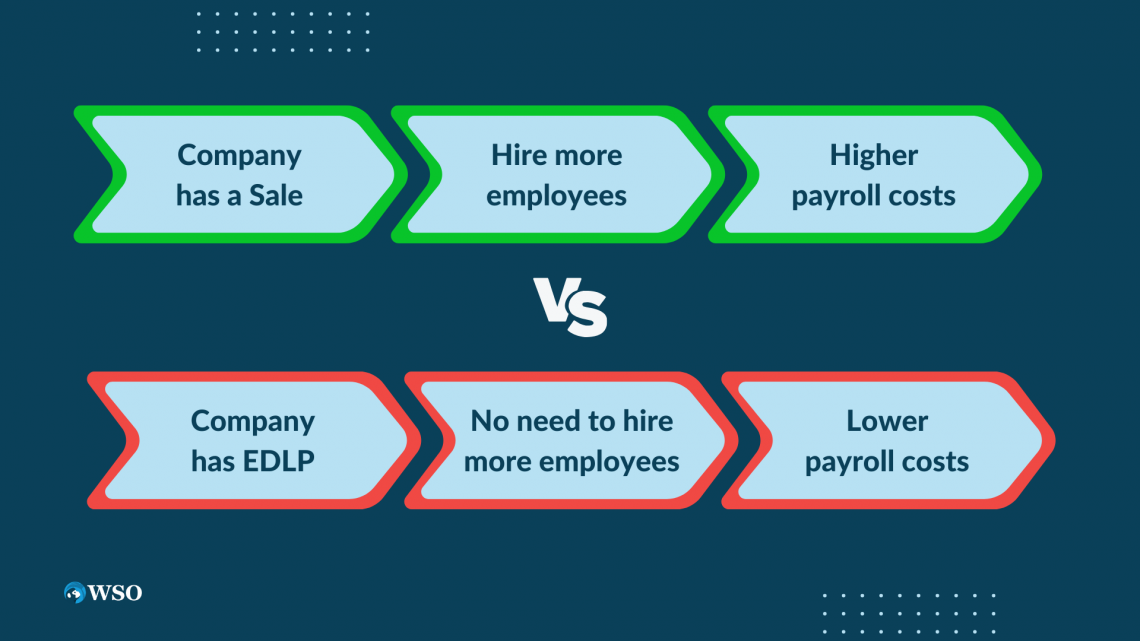
Because everyday low pricing leads to a more stable revenue stream, it allows companies to more efficiently plan and forecast their financials. This level of predictability causes fewer supply chain issues and as well fewer inventory and stocking issues.
What is High low pricing?
High Low pricing is an alternative strategy to everyday low pricing. With a high low pricing strategy, a company will not attempt to have the lowest prices on a consistent basis. Instead, it will temporarily host sales events that offer steep discounts.

These events commonly occur during times like Black Friday, Christmas, and at the end of the summer when children go back to school.
While high low pricing leads to a volatile revenue stream, it can be more profitable than EDLP. Everyday low pricing is difficult to implement because it can take a very long time to establish customer loyalty and trust. Meanwhile, the high low pricing strategy has a lower barrier to entry.
Companies often initiate high low pricing via selling a product for a high price and then suddenly dropping the price very low to attract customers. Companies may do this if the product isn't selling particularly well, or they may do this purely to attract more customers regardless of how well the product is selling.
Some companies may go as far as to intentionally increase the price of a product and then discount the product in order to create demand. In the most extreme cases, a company may increase the price of a product by 500% before putting it on sale.

In the United Kingdom, increasing prices to this degree for the sole purpose of discounting the product later is an illegal act. Companies that are well known for implementing high low pricing are:
Generally, companies that are currently using a high low pricing strategy wanting to switch over to an everyday low pricing strategy may find it to be a very difficult and expensive exercise.
It is estimated that the cost of switching from high low pricing to EDLP is six times more than the cost of switching from EDLP to high low pricing. Consumers that are attracted to companies with a high low pricing strategy are those that love to search for bargains.
People who find it entertaining to find and use coupons and shop for discounts appreciate a company that holds sales events and implements discounts on various products.
Types of pricing strategies
While everyday low pricing and high low pricing are the most common pricing strategies, there are a number of other pricing strategies that can be utilized by a business.
1. Cost Plus Pricing
It involves calculating the total from the costs that went into manufacturing the product. After calculating the sum, then a percentage is used to mark up the price of the product. The mark up percentage essentially represents a company’s desired rate of return.
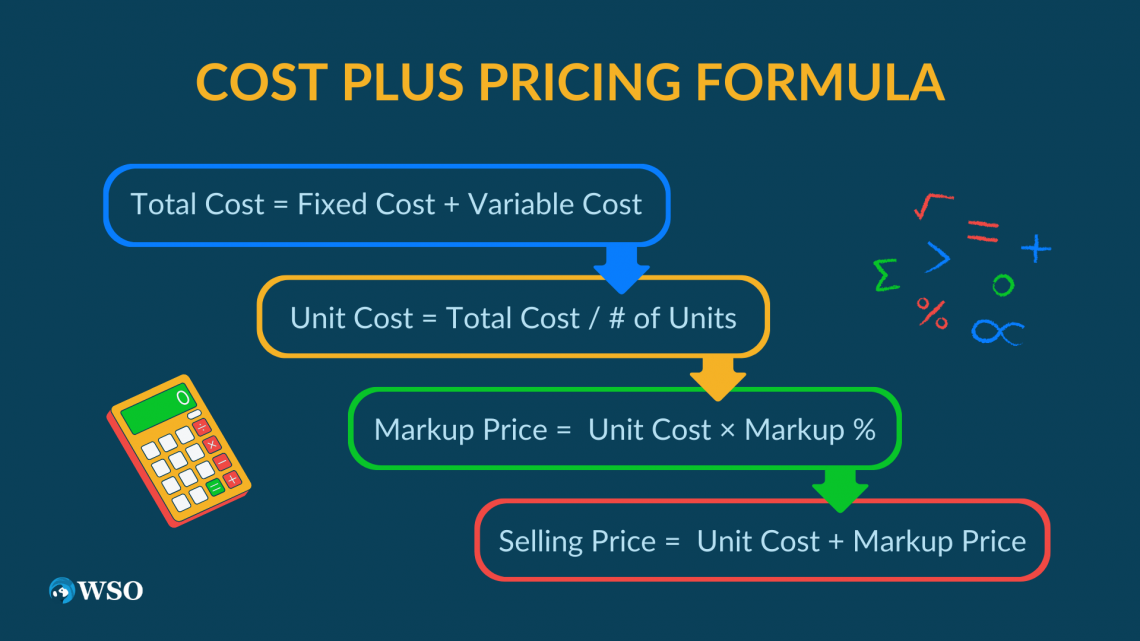
In order to properly implement this strategy, a company must have access to the relevant information associated with the manufacturing process.
To calculate the price of the product, first you find the total cost. The total cost is found by adding the fixed costs to the variable costs. Then you take the total cost and divide it by the total number of units, this formula gives you the unit cost.
After this you take the unit cost and multiply it by the markup percentage to find the markup price. Now you can determine the selling price by taking the markup price and adding it to the unit cost.
2. Competitor Based Pricing
A company prices their products solely based on their competitors' prices. They do not offer a higher price or a lower price, but instead perfectly match the price of their competitors.
It can lead to missed opportunities such as offering lower prices for the same product or higher prices for a superior product.
3. Penetration Pricing
A Company intentionally sets their prices low in the beginning stages of a product rollout. This attracts new customers and creates the opportunity for customers to get hooked on a product.
After a brief period of low prices, the company slowly raises the price with the hope of customers continuing to buy the product regardless.
This strategy allows a company to take over market share and can be a great way to introduce a new product.
4. Skimming
A company introduces a new product to the market at a high price. After a brief period, the company slowly lowers the price of the product to capture more market share.
This strategy is often used for products that have less price sensitivity such as luxury goods.
Advantages and disadvantages of EDLP
While many companies have had success with EDLP, many have also failed to implement it. Everyday low pricing comes with many advantages and disadvantages when compared to other available pricing strategies.

The advantages are:
- Simplifies the consumer's decision making process. Allows customers to make quick and easy choices because they feel confident about where to go to find the best available deal.
- Helps companies increase revenue through an increase in consumer demand. Despite prices being lower, more customers shop with the company which leads to more purchases.
- Allows companies to more accurately forecast their financials because of the reduced volatility in their income and expenses.
- Lowers a company’s marketing and advertising expenses. The absence of sales events reduces the need for commercials that spread awareness about discounts.
- Companies can hire less employees due to the lack of sales events. This lowers expenses and leads to a higher net income for the company.
- Simplifies supply chain management and inventory management.
- Allows a company to place more focus upon product management as opposed to marketing campaigns. This can theoretically lead to a company being able to provide a higher quality product.
The disadvantages are:
- It takes a long time to establish a brand that centers around consistently low prices.
- By adopting EDLP a company may ostracize a certain sector of its customer base. Some customers particularly enjoy searching for discounts.
- A company must have access to a large volume of product in order to justify their low prices.
- Because prices are lower, it can lead to a lower gross profit margin if customers do not begin purchasing products at a higher frequency.
- Removes a company’s ability to hold a sales event. If customers see a company offering discounts when their brand revolves around having the lowest prices, they will lose trust in the company.
- Can invite price competition amongst other companies that implement EDLP as their pricing strategy
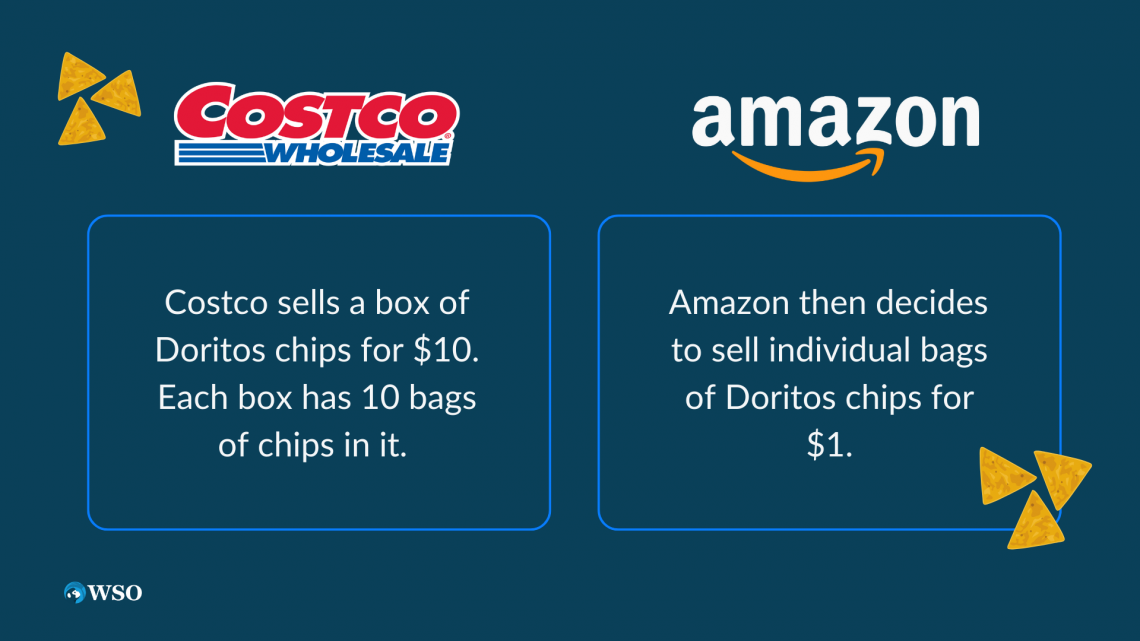
- It can be very expensive to switch from high low pricing to EDLP.
- Companies run the risk of having customers perceive their products to be inferior and of a low quality due to the extremity of their low prices.
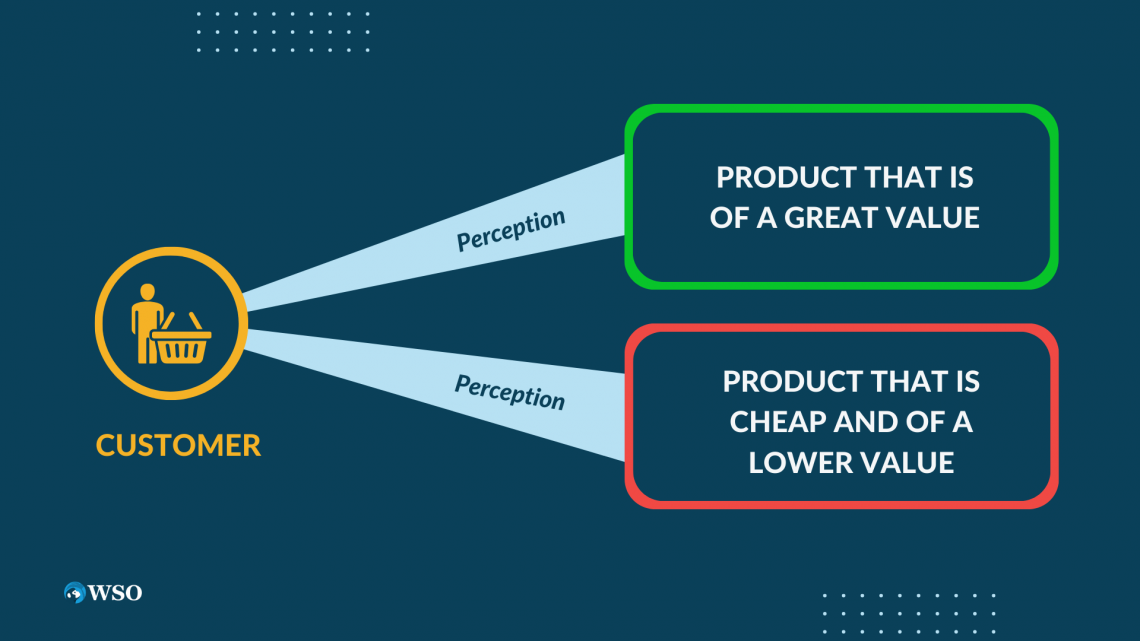
Everyday Low Pricing Example: Walmart
Founded by Sam Walton in 1962, Walmart is a supermarket that incorporates aspects from both a retail department and a grocery store. It is the world's largest company when measured by revenue on an annual basis.
Walmart prides themselves on having the lowest prices. They achieve their low prices via the scale effect.
The scale effect can be achieved when a company is able to increase volume and become larger, sometimes this can lead to a company becoming more efficient. This efficiency results in lower costs of production which then translates to lower prices.
Walmart archives their scale effect through having hundreds of stores located within one region. This allows Walmart to order in bulk and benefit from low shipping and transportation costs. An individual store has no bargaining power with suppliers, while an integrated network of stores do.
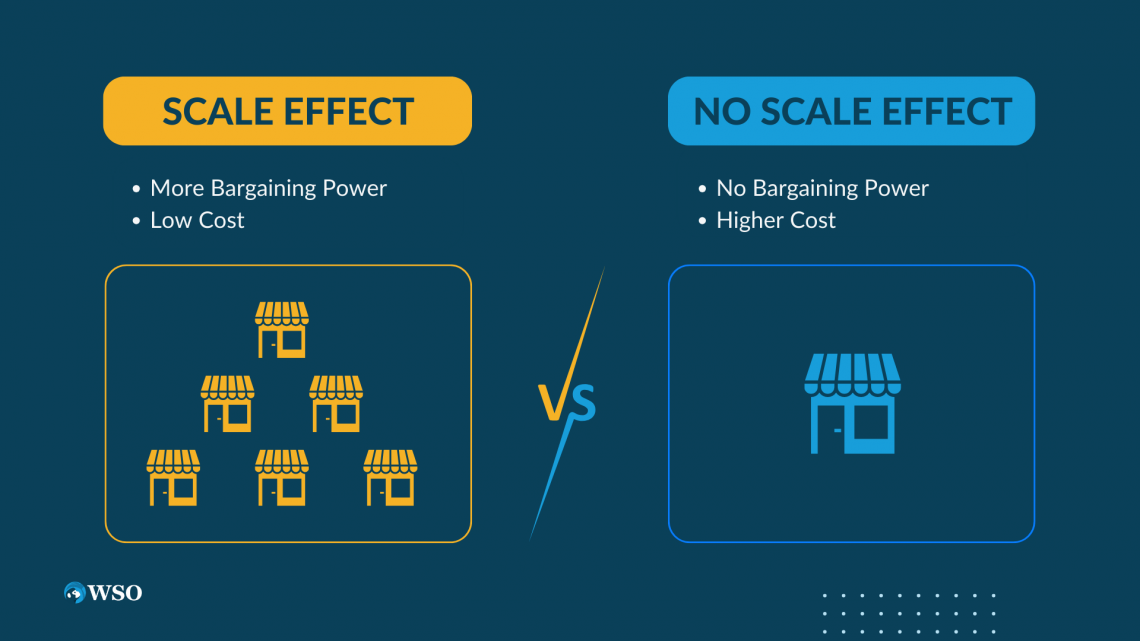
When it comes to supplier relationships, Walmart places a heavy dose of pressure on their suppliers in order to acquire the lowest price. Many suppliers rely on Walmart's distribution which gives Walmart a significant amount of bargaining power.
Walmart will often reward companies that are willing to offer them low prices. If a company will not negotiate with them, they will begin limiting distribution and instead begin creating their own branded products.
They also place an emphasis on investing in information technology. Through high quality technology, Walmart can improve the efficiency of their inventory management and supply chain management. This dynamic leads to a reduction in working capital investments.
By keeping costs low it allows Walmart to have increasing flexibility when it comes to offering low prices to their customers.
Today all Walmart stores have signs across the store that say “Everyday Low Price.” This program was initially implemented in 1974 by Walmarts vice president Jack Shewmaker.
Schewmaker originally proposed the slogan be called “Low Prices Everyday,” though it was later changed in order to emphasize the “Everyday” part of the slogan first. The intention behind this switch was that it would highlight the consistency of low prices.
Everyday Low Pricing Example: JCPenney
JCPenney is a department store chain founded in 1902 by James Cash Penney. In November of 2011, JCPenney hired Ron Johnson as its chief executive officer (CEO). Ron Johnson had formerly worked at Apple and was responsible for the success of Apple's brick and mortar stores.

In addition, he had previously worked at Target and was credited for revitalizing Target's brand.
JCPenney had been struggling and needed a new CEO to restore both the company’s brand and profitability. It was believed that Ron Johnson was the perfect hire.
Johnson began a complete rebrand once in charge of JCPenney. The new brand would center around everyday low prices, a new logo, and individual boutique stores located within each JCPenney store.
He wanted to reduce the reliance on private label items and turn each store into a place where people felt comfortable spending their free time.
Prior to Johnson's arrival, the JCPenney brand revolved around steep discounts, sales events, and coupons. Johnson believed that pricing products in a fair and transparent manner would lead to more success. Sales events, discounts, and coupons were discontinued.

By the end of Ron Johnson's first year as CEO:
- Store sales declined by 28%
- Revenue declined $4.3 billion
- Common stock fell from $40 per share to $18 per share
After 17 months of being CEO, Ron Johnson was fired from his position. Immediately after being let go, JCPenney common stock appreciated by 10% in one day.
Everyday low pricing failed for JCPenney because it ostracized their original customer base. Johnson failed to recognize that many loyal shoppers enjoyed searching for bargains, attending sales events, and collecting coupons. These types of customers found this process to be fun and exciting.
The removal of private label products from JCPenney stores contributed to this ostracization. Before Johnson's changes were implemented, private label brands accounted for 50% of JCPenneys revenue.
Free Resources
To continue learning and advancing your career, check out these additional helpful WSO resources:




or Want to Sign up with your social account?